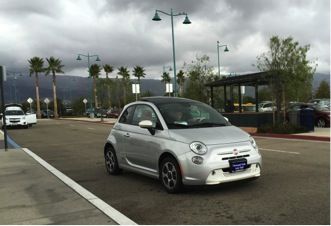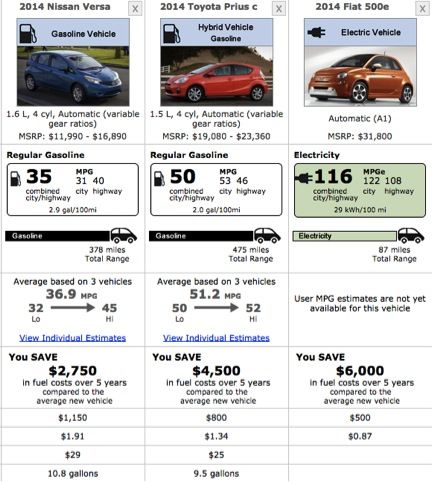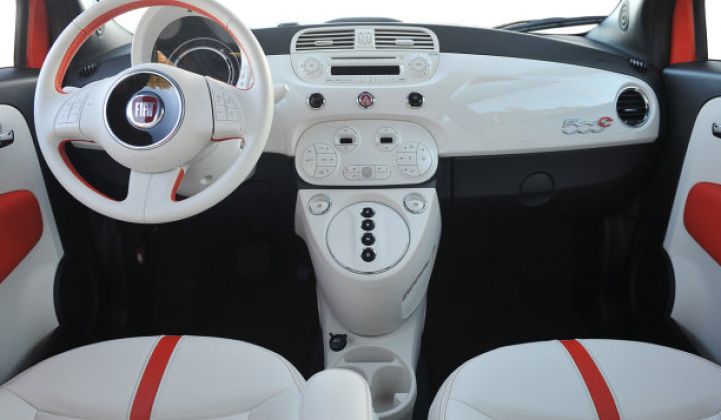I drove a Prius C for two years and it just felt too big. Even this itty-bitty car drags around about 2,500 pounds of steel and plastic while it’s also dragging the driver around. And each time the gas engine kicked in when the car reached about 15 mph, it felt like a mini-tragedy. No more pure electric drive; now we’re burning squashed dinosaurs again.
Don’t get me wrong, the Prius C is a great little car, and when I got it in mid-2012, it was the most fuel-efficient vehicle you could buy.
Today’s cars, even tiny ones, are extremely inefficient in terms of how much energy is wasted in getting just one person around. Even the Prius C wastes about 70 percent of the energy content of the gasoline fuel it uses, due to inherent inefficiencies in gasoline engines. Generally speaking, internal combustion engine light-duty vehicles (i.e., passenger cars and light trucks) lose almost 60 percent to 75 percent of the gasoline’s energy through heat losses. The rest is lost through idling, braking losses, and other factors.
We can clearly do a lot better than wasting 70 percent of the fuel we use in transportation.
I personally pulled the plug on oil by diving fully into the world of electric vehicles in November. Fiat has offered a sweet deal on a lease for the Fiat 500e since it was first introduced in May. This little car is not only highly efficient; it’s also super-stylish, even sexy in a geek-chic kind of way. Here’s a portrait of my new love (Figure 1).
Figure 1: My New Fiat 500e Smiling for the Camera

The Fiat is available under a 39-month lease at $199 per month with about $1,000 down. This amazing deal is possible primarily due to two things: 1) California’s fairly aggressive zero-emission vehicle mandate, which requires an increasing number of zero- or low-emission vehicles to be sold by each brand; 2) a federal $7,500 tax credit (not a deduction, a credit) for all new pure electric vehicles sold.
The kicker is that California also offers a $2,500 rebate for pure electrics, so when this payment is factored in, the Fiat is almost free for the first year of its ownership. Yes, free. Get ‘em while you can, because deals like that don’t last long.
Deciding to take the plunge
I’ve thought about going pure-electric for a while but hadn’t until now for a few reasons, including the fact that I’m a single guy in a one-car household, and having an EV with limited range wouldn’t work for my lifestyle. Cost was also a concern.
The Fiat 500e has an official range of 87 miles. After my first month of ownership, I've found that that range is pretty accurate. I live in Santa Barbara and usually make occasional trips to Los Angeles and San Francisco, and I also go on longer road trips camping or visiting family in Washington state and Oregon a couple of times a year. Clearly, those road trips won’t be possible in a car with 87 miles range. But here’s the cool thing about the Fiat lease: it comes with $500 (about 12 days' worth) of free car rentals per year, and that’s what gave me the confidence that an EV could work for me now.
There are a number of EVs available today in California and other states (the Fiat is only available in California and Oregon for now), and I did a fair amount of research before settling on the Fiat. The primary models available include:
- The Nissan Leaf, which by all accounts is a great car, but is just too ugly for me to seriously consider. What were the designers thinking?
- The Tesla Model S, which is, like just about every other guy my age, my dream car. But the closest I can come to owning it right now is drooling on the ones I see in parking lots around town. Its base price is $72,000, and it can easily reach about $100,000 when various options are added, like dual drive and autopilot. One day I’ll own a Tesla, but not now. If I took on that $1,200+ monthly payment right now, it would own me, rather than the other way around.
- The Chevy Volt plug-in hybrid. Owners love this car, and a new survey found that 92 percent of owners are very happy with their electric vehicle.
The Chevy Volt would have been a better fit for me than the Fiat, because the Volt has a gas tank that can be used to charge the batteries for much longer range than the 38 miles of the built-in batteries. However, my situation was unusual in that my car loan on my Prius C was upside down by about $5,000. Fiat gave me a pretty good deal on my trade-in, so even with the upside-down portion rolled into my new lease, it’s still affordable. My local Chevy dealer couldn’t offer me a very good deal, so despite my appreciation for the Volt, and its superior practicality in terms of much greater range and more passenger and storage space, I opted for the Fiat.
I don’t regret that choice at all. The Fiat is a really fun car to drive. It’s very zippy, and you can make the wheels chirp without much effort. It’s so cute, you’d think it’s a Hello Kitty car rather than a Fiat. And it’s Italian-made, with all that entails. Its various features work wonderfully, and it’s well made. It even has heated seats. The zinger for my particular model is the sunroof. I highly recommend the sunroof on this vehicle, since it can be a vent, an open sunroof, a skylight, or a screened sunroof, depending on your needs at the moment.
I was somewhat amused when the dealer told me that no service would be needed on my new car until 20,000 miles, although the version with a sunroof needs service at 15,000 miles. This is another major advantage of EVs: far fewer moving parts, which don’t require anything like the servicing that ICEs need.
EVs can be a great deal now due to the subsidies offered by federal and state governments. But we can already see the future clearly: battery costs will continue to come down dramatically, vehicles will become steadily lighter, and as a consequence, we will see EVs becoming increasingly affordable even without subsidies. Moreover, the current federal and state subsidies are designed to phase out over time volumetrically, so today’s subsidies aren’t designed to be perpetual. This phaseout will act as an incentive for manufacturers to work hard on reducing prices.
EVs are inherently more efficient than internal combustion engines
Now, back to the efficiency discussion with which I began this piece. In my case, I charge at home (I work out of my home), and electricity is part of my rent, so I now literally pay zero for fuel costs. But even if I paid for electricity, I’d still see major fuel-cost savings, because EVs are inherently far more efficient than ICEs. As mentioned, ICEs waste about 85 percent of the energy they use. EVs waste only about 40 percent of power from the grid, and even less if that power is received from solar panels on your roof.
A good way to compare ICEs and EVs is the “miles per gallon equivalent" (MPGe)" measure, which is designed to convert electricity as a vehicle fuel into gasoline equivalents. For example, my Fiat has a 117 MPGe rating, compared to 50 mpg for the 2014 Prius C and 35 mpg for the Nissan Versa (see Figure 2 for the full comparison). So comparing equivalent small cars to my Fiat, we get a fuel efficiency boost of 2X to 3X. And if we compare larger cars, we get an even more favorable result.
Figure 2: Comparison of Nissa Versa, Toyota Prius C and Fiat 500e

Source: www.fueleconomy.gov
Based on this increase in efficiency of EVs, fuel costs are one-half to one-third as much as fuel costs for equivalent ICE cars. As Figure 2 shows, the fuel-cost savings of my Fiat are about $6,000 over five years when compared to the average new vehicle.
For the EV revolution to continue, we’ll need to see battery costs steadily fall in price. Currently, they still add up to a significant premium for EVs compared to their non-electric cousins. For example, the sticker price of my Fiat 500e is about $31,000, compared to about $17,000 for the non-electric version. That’s a premium of $14,000, which isn’t currently made up for by fuel-cost savings. But if that premium falls by half in the next few years, which is a reasonable expectation, we may well see many EVs become affordable on their own terms when we consider the fuel-cost savings. At the same time, many premium features come with switching to EVs.
Let the revolution roll on.
***
Tam Hunt is the owner of Community Renewable Solutions LLC, a renewable energy project development and policy advocacy firm based in Santa Barbara, California and Hilo, Hawaii.



